Workplace Safety - Quick Guide
Workplace Safety - Introduction
The origin of the concept of workplace safety can be traced back to labor movement during the Industrial Revolution in Europe in the 18th century. During this revolution, unions of workers were formed to work towards the welfare of workers. Workers began to demand better working conditions. Authorities gradually acceded to the demands of the workers and put in place several regulatory measures to this effect.
What is Workplace Safety?
Workplace safety is a composite field related to safety, health and welfare of people at work. It narrates the strategy and methods in place to ensure health and safety of employees within a workplace.
Workplace safety includes employee awareness related to the knowledge of basic safety, workplace hazards, risks relating to hazards, implementation of hazard preventions, and putting into practice necessary safer methods, techniques, process, and safety culture in the workplace.
It also includes safety rules and regulations designed mostly on the basis of existing government policies. Every organization puts in place a number of safety rules and regulations for its people. Safety training and education for employees is imparted periodically with a view to making them aware about and updating them with latest safety measures.

Workplace safety is about putting a stop to injury and sickness to employees in the workplace. Therefore, it is about safeguarding assets and health and life of the employees. It also features in cutting down the cost of lost-work hours, time spent in putting short-term help and the schedule and services that may fall off due to less of service providers, pressure on those providers who are selecting the absent employees portion or poor case, having to shut out or shut down a program due to lack of providers.
Need for Workplace Safety
Before analyzing various aspects of workplace safety, it is pertinent to know the reasons for ensuring safety in life. We attach top priority to safety and security in places we live, stay, visit or work in.
To Say no to Accidents − Accidents are fallouts of recklessness and lack of responsibility. When we don’t follow required safety norms we end up in getting injured or even in ending our valuable lives. It is true with regard to our home and workplace alike.
To Stay Healthy and Energetic − We should have a healthy food habit, which is itself a safety measure, to keep us healthy and lively for work at home and in workplaces.
To have Longevity in Life − We should take care of ourselves everywhere we are and of others for leading a safe and meaningful life.
To create Public Awareness − Promotion of safety norms everywhere creates public awareness and discipline. It is true of workplaces and motivates new employees to take up safety measures necessary for their safety.
To avoid loss of Property and Life − The basic aim of safety measures is to prevent the occurrences of mishaps and hazards that sometimes cause heavy loss of life and property.
To Devise Planning for Safety − Need for safety paves the way for devising an effective planning for all-round safety of employees in an organization.
Basic Objectives of Workplace Safety
The basic objectives of workplace safety are as follows −
Preservation of and assistance for employees’ or workers’ health and well-being
Enhancing workability of employees by ensuring a safe and congenial work environment
Growth of the organization that remains free from prospective hazards and mishaps
Encouraging a favorable social climate in the organization that motivates the employees to work efficiently towards organizational progress and prosperity
Secure the health and safety of workers and workplace by eliminating or minimizing risks
Achieve higher productivity among the employees by providing a safe and secure environment
Focus on employees’ safety and health arising from chemicals and hazardous elements used at workplaces.
Workplace Safety - Importance
Maximum employees spend at least eight hours a day in the workplace. Therefore, the workplace domain should be safe and healthy. Everyday employees all over the universe are experiencing a lot of health problems emerging from various sources such as −
- Dust
- Gases
- Noise
- Vibrations
- Excessive Temperatures
Workplace safety and health surrounds the social, mental and physical well-being of employees in all professions. Imperfect and unhygienic working situations have the possibility to upset an employee’s health and safety. Harmful and risky working conditions can be found anywhere, whether the workplace is in a building or in a house or in other country.
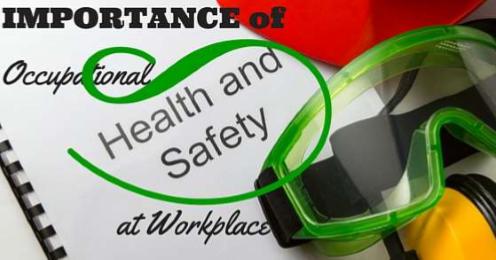
Regrettably some employers don’t have a bit of common sense for the prevention of risks and hazards to employees’ health and safety. In fact, some employers are not even aware of the fact that they have the legal responsibility to safeguard the employees from work-related hazards and risks. As a result of this problem, and a shortage of knowledge and attention given to health and safety, work-related mishaps are usual in all parts of the world.
Work-related hazards and illnesses are usual in almost all the parts of the world and often have many personal and secondary negative results for employees and their families. A single hazards and sickness can mean extensive financial loss to both the employees and the employers.
Successful workplace safety and health programmers can assist to protect the lives of employees by lessening risks and their results. Productive programmers can also have constructive influence on both employees’ self-confidence and production, and can save employers a great deal of penny. In carrying out this promise safety scopes are as follows.
Expand and execute successful policies, strategy and programs which give a safe and healthy work location and encourage the health and safety and well-being of their staff and that of their clients and the public.
Permission to use professional health and safety policies and programs and strategies on a daily basis.
Take every safety measure to make sure that their work does not cause a danger or an injury or sickness or environmental trouble to the employees and the customers or the general public.
Observe and obey all Health, safety and environmental laws and regulations.
Educate of the newly recruited employees of their health, safety and environmental responsibilities and the accidents and dangers related to work and about the safety exercises in the workplace they execute.
Safety scopes contemplate health, safety and environmental safeguards of initial importance and acknowledge the rights of every employee to work in a safe and healthy work location.
Workplace Safety - Planning
Every employer needs to concentrate on the employees’ health and also the safety and security in the surrounding they are a part of. The surroundings could be home, workplace or anything where they live. These surroundings need to be clean, hygienic, safe and secured for employees to live their life happily. As we live in our home, we definitely take care of our surroundings, but what about the work place? This is a big question, which everyone should think about.

Most of our peak time is spent in office or at work than the time we stay at home. Hence, being safe and healthy at the workplace is very important. So, workplace safety is one of the very important aspects of any organization. Being an employer, the organization should provide a safe workplace for any employee keeping in mind the health and security of the employee.
What is Workplace Safety Planning?
Safety planning is a set of preparatory approaches and policies to meet safety and health challenges and needs. Generating a safety plan includes picking out actions to enhance the safety and health of employees, especially, of those who work in hazardous and risky places and are expected to fall victim to dangers.
As an employer, it is your accountability to handle a safe and healthy workplace. A safety and health management system, or safety program, can assist you to redirect your efforts to upgrade your work environment. Whatever you call it, your plan narrates what the people in your organization do to prevent injuries and illnesses at your workplace.
Your organization will have its own distinctive system, indicating your way of doing business, the risks of your work, and how you handle the safety and health of your employees −
If you manage a small business in a low-risk industry, your system may generally involve listening to your employees' concerns and responding to them. Put in place necessary safety measures and ensure a healthy place for the workers or employees to work in.
The larger the organization the greater the risks for safety and health issues. A large business in a dangerous industry may have notepads full of written policies and methods and a full-time safety director.
What's most important is that your system works for your organization. It's up to you to decide how best you can do to run a safe and healthy workplace, and to put your plan into practice.
Workplace Safety and Health Legislations
Occupational health and safety legislation manages the quality of workplace hygiene and safety with the objectives to stop workplace accidents, injuries and diseases, and make laws against violation of those standards. It features responsibilities of employers, supervisors, and employees.
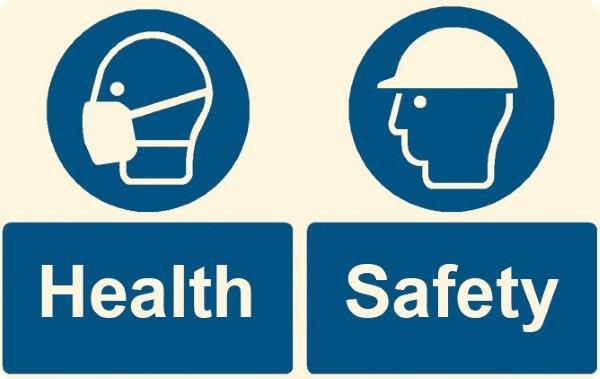
Normally, the legislation needs that the employers do everything they can fairly do to safeguard the health and safety of their employees in the workplace.
This includes, but is not restricted to: providing suitable training for picking up possibly dangerous equipment and/or material, informing employees of possible dangers in the workplace, and setting up safe work exercises.
A health and safety committee is an assembly for upgrading workplace health and safety. A committee consisting of both employee and management representatives is needed to look after the safety and health factors in the organization.
Generally, the role of the committee is to recognize and help in stopping or preventing any untoward incidence and hazards form occurring in the workplace, endorsing solutions to any issues, and encouraging and maintaining health and safety in the workplace.
Health and safety are important issues in all workplaces and as such, organizations are required to obey with health and safety regulations and acts. Health and safety is generally controlled by provincial or territorial legislation. Organizations fall within the federal or central jurisdiction have separate legislations to deal with health and safety issues.
While all provinces and territories have same legislations, there is contrast among them. It is very significant to visit your province or territory’s health and safety website for information that is applicable to you and your organization
Roles and Responsibilities
We have now understood that workplace safety is very important and plays an important role in any organization. Let us understand then the roles and the responsibilities which are to be followed for creating a healthy and safe workplace.
Employers have a number of duties under the Act. The different needs are divided into the following headings −
- Common duties of Employers
- Supplying Information to Employees
- Lessons, Training & Administration of Employees
- Emergencies and serious and close dangers
- Securing and Obstructive Measures
- Hazard Recognition & Risk Evaluation
- Safety Statement
- Mutual Effort
- Health Observation & Medical fitness to work
- Safety Agent
- Employee Discussion
- Punishment

Let us now discuss in brief about each responsibility in detail.
Common Duties of the Employer
To protect the safety, health and welfare at work of the employees.
To supply systems of work that are planned, organized, performed, preserved and rethought as appropriate so as to be safe and risk-free.
To supply and maintain opportunities and arrangements for the welfare of employees at work.
To give information, instruction, training and management, where necessary.
To execute the safety, health and welfare plans necessary for protection of employees.
To construct and review emergency plans and procedures.
Information to Employees
When giving information to employees, employers must safeguard that it is given in such perfect form, manner and language that it is suitable to be understood by the employees concerned.
Where persons from other organization are engaged in work activities as per an employer’s agreement, the employer must protect that the person’s employer receives the above details.
The employer must ensure that very capable persons are appointed as safety agents of officers.
The employer must provide details relating to the following before a fixed term or temporary employee start to work.
Lessons, Training and Administration of Employees
The employer must ensure that −
All details, training and management is given in a manner, form and language that is honestly suitable to be understood by the employee(s) concerned.
Employees receive, during time off from their work but without loss of pay, sufficient health, safety and welfare training including, in details, information and order relating to the particular work to be executed and measures to be taken in an emergency.
Training must be modified to take account of new or changed risks in the workplace.
Emergencies and Serious and Close Dangers
The employer must give sufficient plans and procedures to be followed and measures to be taken in the case of emergency or serious and close danger.
These plans should −
Provide measures for first aid, fire-fighting and property eviction taking into account of the nature of the work being carried out and the size of the place of work.
Set out essential contacts with accurate and dependable emergency services.
Appoint employees who are needed to apply these plans, procedures etc.
Protect that all appointed employees have sufficient training and equipment available to them.
Securing and Obstructive Measures
The employer must −
Nominate a sufficient number of capable persons to carry out the functions related to the protection of employees and give them sufficient time and means to do those functions.
Make arrangements for co-operation between the capable persons and the safety agent.
Give favor to capable persons within their employment period by nominating a capable person to higher position or by rewarding him/her.
Hazard Recognition and Risk Evaluation
The employer must −
Locate the risks and hazards (Risk or Hazard Identification).
Assess the potential threats from the Risks or Hazards (Risk Assessment).
Bring improvements or changes in the situation involving the risks (Risk Control).
Evaluation of the control measures to reduce risks.
Safety Statement
Employers must have a written Safety Statement, which is a document that outlines how an organization deals with safety and health of the workplace and the employees. Usually, Safety Statement should be two-fold, such as −
Steps to Prepare Safety Statements −
Devising a suitable but dynamic health and safety policy.
Regular carrying out of Risk Assessment.
Revising safety measures after risk assessment.
Record the findings of safety assessment.
Reviewing the safety programs and bring updates if necessary.
Identifying every possible threats and hazards from materials, equipment, chemical and work activities.
The Safety Statement should state −
The hazards recognized and risks evaluated.
The safety and precautionary measures taken and the resources provided.
The emergency plans and proven methods.
The names, job titles, positions, duties of anyone appointed with safety responsibilities.
The Safety Statement should be brought to the attention of −
Employees at least yearly or when there is any alteration.
Newly engaged employees upon the initiation of employment.
Other persons at the place of work who may be revealed to any specific risk.
The employer must analyze the Safety Statement if −
If an employer who employs three or fewer employees is busy in an activity for which there is a Code of exercise for that type of activity, they can fulfill their duty in relation to Safety Statements by abiding such Code of Practice.
Mutual Effort
Where employers share a place of work, they must −
Act jointly in obeying with and applying the applicable legal supply.
Act Jointly in relation to safety and safeguarding of employees.
Inform each other, respective employees, safety representatives etc. of all hazards.
Health Observation and Medical Fitness to Work
Employers are needed to ensure that health observations suitable to the risks that may be experienced in the place of work is obtainable to all employees.
All work-related activities and occupation should be conducted under appropriate regulation so as to ensure safety and health in the surroundings. Employees are needed to notify their employer or their employer’s Registered Medical experts if they are unfit to carry out an authorized work activity.
Safety Agent
The employer must −
See eye to eye with the safety agent in the frequency of perusal to take place.
Appraise any agents made to him or her by the safety agents and so far as fairly feasible take any action that he or she contemplated essential or appropriate with regard to those agents.
Allow the safety agents such respite from their work, without loss of pay, as is sensible to enable the safety agent to obtain the knowledge and training and time to dismiss their functions.
Inform the safety agent when an examination is taking place.
Give the safety agent a copy of the written verification, required under the Act and sent to the examiner, that a development or banning Notice has been obeyed with.
Employee Discussion
Employers are needed to −
Discuss with employees for the purpose of making and keeping safety arrangements.
Discuss with their employees and safety agents in good time regarding safety measures offered, the post of employees with safety responsibilities, action arising from or relating to the safety from and the halting of risks, the hazard recognition and risk evaluation.
Punishment
Employers are forbidden from inflicting punishment or menacing the employees, who are doing any duty and who make any complaints relating to safety and health.
An employee, while at work must −
Observe with all applicable legal provisions.
Take rational care to preserve the safety of themselves and others who might be influenced by their acts and deletion.
Offer to be rational, appropriate for testing, if reasonably needed by the employer.
Undergo adequate training as may be requisite.
Inform the employer or the employer’s appointed registered experts if they are suffering from any disease or physical or mental imbalances which influence their performance of work activities that could give rise to risks to the safety, health and welfare of persons at work.
Workplace Safety - Workplace Hazards
Keeping a safe workplace needs employers to pick out hazardous and risky issues and take necessary steps to reduce their chance of occurrences. Each industry has its own set of hazards, but there are workplace hazards that are general across organizations. The hazards in this module are examples of usual hazards.
By recognizing and predicting hazards, employers can protect employees from injuries and hazards and keep them safe. The terms Hazard and Risk are frequently used mutually but this simple example explains the difference between the two.
Workplace Hazards by Computer Workstations
Computer workstations may seem non-dangerous, but monotonous movement injuries such as repetitive stress injury and muscular skeletal problems are general due to badly engineered workstations.
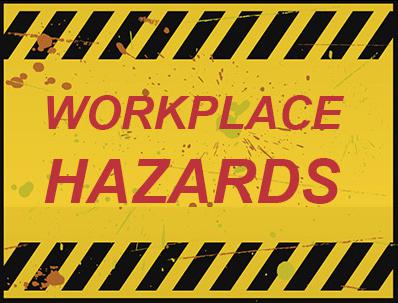
Workstations need to be structured so that the body remains in a safe, impartial position and injuries are curtailed. These elements include: desks, monitors, keyboards, chairs, mouse, telephones, document holders, and wrist pads. There should be sufficient room in the workstation to move around and take short breaks from boring tasks.
Workplace Hazards by Ergonomics
Ergonomics is the study of efficiency of people in their workplaces. Certain often unnoticed workplace situations may lead to both short-term and long-term illness. These happen when the type of work, body positions and working conditions put a stress on your body.
Ergonomics are the toughest to spot since you don’t always directly notice the struggle on your body or the harm that these hazards pose. Short-term display may result in “sore muscles” the next day or in the days following the exposure, but long term display can result in serious long-term illness.
Ergonomic Hazards result due to the following reasons −
- Poorly adjusted workstations and chairs
- Having to lift heavy objects too often
- Embarrassing movements, especially if they are continuous
- Having to use too much force, especially if you have to do it frequently
- Dealing with frequent vibrations
Fire Prevention
Fire safety is everyone's accountability. Fire presents remarkable risk or threat to the survival of businesses. It can kill or seriously injure employees or visitors and can damage or destroy buildings, equipment and stock.
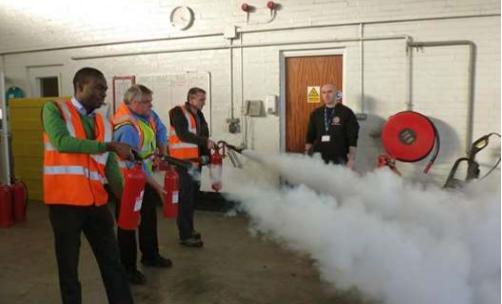
Organizations working from single premises are especially endangered as loss of premises may completely damage their operations. Many businesses fail to continue trading following an acute fire.
Threats of Fire at Workplaces
Fire can have devastating effect on businesses. The destructive power of fire can only be controlled and checked. Even after putting in place stringent fire safety measures, organizations sometimes fall victim to fire at workplaces causing a great loss to property and human lives.
Every stakeholder of an organization or a company like its employer, the management, the employees, the visitors, the customers and the general public must be aware of the potential threats of fire on the premises. The employer or the management has to bear the responsibility for making provisions of fire safety and activate awareness programs for the knowledge of all concerned.
The potential threats from Fire can be common occurrences in an organization that −
Stocks combustible materials like cotton, paper, plastics etc. including flammable liquids or gases
Uses heat methods and lacks sufficient extinguishers placed throughout the workplace
Has public entry, so the organization is at risk from arson
Has very poor housekeeping standards
Has poorly preserved equipment, poorly maintained machinery, or electrical circuits
The following steps are essential to deal with the menace of Fire −
Ensure all measures to reduce or prevent the chances of fire accidents from occurring
Regular carrying out of fire risk assessment
Immediate actions to eliminate risk factors after the assessment
Safeguard the workplace by putting fire extinguishers at every possible location in and around the premises
Remove inflammable waste daily, including build-up of dust
Notify the fire precautions for the knowledge of all concerned to safeguard anyone using the workplace
Provide information, instruction and proper training to employees about the fire precautions at workplaces
Workplace Safety - Health Hazards
Keeping a safe workplace needs employers to pick hazardous and risky issues and take necessary steps to reduce their chance of occurrences. When an employee is working in any organization, there are chances of getting effected by health hazards.
Each industry has its own set of hazards, but there are workplace hazards that are general across organizations. The hazards in this module are examples of usual hazards.
Workplace Hazards by Fitness and Wellness
More employers are taking steps to make better the health and fitness of their employees. It is in an employer's best hobby to spend in the wellness of employees. Healthy employees are more efficient, take negligible sick days, and cost less in insurance premiums.
One can look at the following ways to improve fitness and wellness at the workplace −
- Offer to add gym memberships or have workout apparatus at the office
- Support smoking termination programs
- Encourage nutrition and weight loss programs
Workplace Hazards by Heat Stress
Employees who work in immoderate hot situations are in danger to heat stress. Heat stress includes heat stroke, heat exhaustion, heat faint, and heat cramps. Jobs especially responsible to heat stress are factory workers, bakers, miners, fire fighters, construction those of workers, are more prone to heat stress. Heat stress can lead to injuries as people become unsteady or lose awareness after working in heat condition for regularly for hours together.

Many people are exposed to heat on the job, outdoors or in hot indoor environments. Work involving high air temperatures, bright heat sources, high stuffiness, direct physical contact with hot objects, or difficult physical activities have a high possibility for causing heat-related illness to the employees.
When the air temperature is close to or warmer than normal body temperature, cooling of the body becomes more difficult. Blood circulated to the skin cannot lose its heat. Perspiring then becomes the chief way the body cools off. But, perspiring is effectual only if the humidity level is low enough to allow evaporation and if the fluids and salts that are lost are sufficiently replaced.
When the body fails to get rid of excess heat, it will keep it. When this happens, the body's vital temperature rises and the rate of heartbeat increases. As the body continues to store heat, the person begins to lose close attention and has difficulty in emphasizing on a work, may become bad-tempered or sick, and often loses the desire to drink.
Following are the ways to prevent heat stress −
- Drink water and hold back from caffeine
- Splash cold water on the face
- Rest in cool place
- Take continuous breaks
- Slowly modify to the heat
- Wear the suitable clothing, if possible, loose fitting and lightweight clothing
- Take extra precautions with certain medications suitable the work situation
Workplace Hazards by Stress
Tiredness is a state of physical and/or mental weariness which minimizes a person’s ability to execute work safely and efficiently. Tiredness is due to a person’s lack of discipline and commitment. It minimizes awareness. This may lead to errors, and an increase in workplace incidents and injuries.
There are various causes of tiredness; some of them are reciprocal. These include −
Work schedules – hours of work, night work and shift work
Long work hours, inconsistent work hours, and plans that require night work can cause tiredness. These plans limit the time for a person to bodily and mentally retrieve himself/herself from work. Working at night cuts in the natural sleeping rhythm, which can cause tiredness.
Sleep Disturbance
Everyone requires a specific amount of sleep to stay vigilant and work well. People normally need between 7.5 and 9 hours of sleep a night. The most advantageous sleep is deep, calm and taken in a single continuous period. When the length and quality of sleep each day is disturbed, tiredness may be the outcome.
Environmental conditions
Climate extremes, noise and handling vibrating tools place demands on employees and increase tiredness.
Physical and mental work Requirement
Some activities like construction need adequate physical energy and patience for abnormally long hours of work. Some other like long hours of paper work needs high degree of mental peace. All these qualities are difficult to acquire. These jobs can be nagging which cause tardiness among its holders. Mental demands can also expand tiredness; such as works that require periods of great concentration.
Emotional well-being
Work events can be emotionally tiring and expands tiredness, such as daily disapproval for or the pressure to finish a task by the deadline. Non-work events like social activities can also cause anguish and lead to tiredness.
Workplace Hazards by Violence
Non-employees sometimes carry out most deadly activities at workplace. Mostly robbery is the latent motive behind such unlawful commission by outsiders. As per available data robbery constitutes three quarters or more.
Consequently, examine where employees are altering or guarding money, communicating with the public or working alone or in small groups in the late or early hours of the day. You can also make sure the area around your workplace is sunny, put security cameras, or consider scaling back your business hours if late or early action comes to require heavy security and insurance costs.
Workplace Safety - Manager’s Role
It is mandatory for any organization to provide safe and secured work environment to workers or employees and all those who are directly or indirectly related to it. In small organizations, the employer or his/her close aide looks after the safety and health aspects. However, in large organizations, a special department or section is organized for carrying out safety and health measures. The safety manager who heads the department has the sole responsibility to execute and ensure all these measures in the organization.

It is the responsibility of the manager to create a safe work environment. If there is no safety at workplace, employees would not prefer to work and the attrition or low turnout rate increases, i.e., the employees look for job opportunities elsewhere and the work stops, which finally results into downfall of the organization. Hence workplace safety is very important and it is the responsibility of the manager in creating the workplace a safer place to work in.
How to Enforce Workplace Safety Standards?
Among the many concerns that business owners face, the most essential and often disregarded is the issue of health and safety in the workplace. Environmental, health, safety, and quality requirements have enhanced for businesses. This increase has added to the need for organizing process to ensure that these standards are met.
Encouraging health and safety in the workplace not only offers an affirmative work environment for employees, but it also proves to be advantageous to the owner and business as a whole. However, temporary or short-term approach to safety and health needs seems formidable and ineffective.
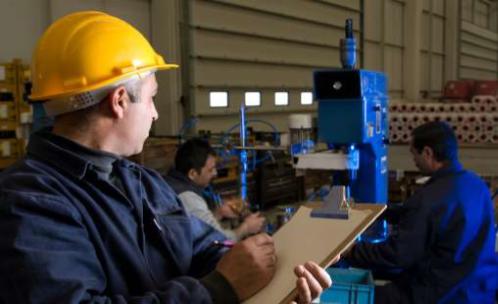
Economic Benefits of Establishing Safety Etiquettes
Studies show that as safety standards are enhanced, work planning increases as well. Many of the accidents resulted in cutting down of work hours, lessening production and decreasing efficiency.
In addition to safety standards, the promotion and education of health standards can also prove to be helpful to companies. While the rate of injury in the workplace has been minimized in the last several years, the rate of illness has increased. One of the leading concerns for employees is the fact that most spend one-third of their day, five to six days a week, at the work place. This information signifies that the workplace is a perfect place to promote health for employees.
Ethical Benefits
When a business’s executive level executes ethical practices, especially in areas that directly satisfy the individual employee, the general sense of corporate responsibility enhances and individual employees tend to respond in kind. This mutual relationship can comfort the company as a whole in many ways. Workers are most productive and comfortable when their personal ethics and organizational ethics are complementary.
Openly advancing ethical guidelines can help employees judge the proper route to take on conditions where a more ethical solution is not noticeable. By doing so, a company can neglect many illnesses, injuries, and other issues that negatively affect efficiency.
Increasing the company’s public image by promoting honesty on both the executive and individual employee levels is advantageous. It not only indirectly increases profits, but it also helps to bring in new business from clients and partners looking for respectable companies.
Workplace Safety - Health Program
Many factors are put in place to create and maintain a safe and working environment. To succeed in creating a safe workplace, the key is to develop and implement an effective safety management system.
A safety management system is a combination of a variety of elements in the organization that need attention to provide a safe working environment for everyone who enters it. A well-designed and efficient safety management system make health and safety an inseparable part of your business’s core operation.

Elements of Safety Program
Following are the most important elements of a safety program −
- Proper planning to fulfill the safety and health policy needs
- Dedication at all levels; by all stakeholders of the organization
- Implementation and operation in accordance with set planning
- Training and education to all who are the beneficiaries of the safety plan
- Auditing and reporting performance
- Preparation of an effective workplace safety and health policy program
- Regular supervision of safety and health performance
A stay-at-work program can be yet another master plan or tool to help construct a safety culture and safeguard injury and/or illness. A specially educated consultant on your team can help offer human engineering involvement for those employees considered “high risk.”
Health and Safety Program - Responsibilities
As a manager, you have a responsibility to identify and fortify productivity and efficiency in your employees, and point out and motivate improvement where required. But to start with, you require viewing performance management as a two-way conversation that goes on throughout the year.
Your employees should never be surprised by the grades and feedback they receive in their basic performance reviews.
As a manager, you are expected to −
Utilize the performance management procedure as a precious tool for holding up the employee’s development and enhancement.
If your employees feel a lack of interest on your part, they'll lose interest too.
When talking with your team about the procedure, be sure to focus its advantages, and motivate the employees to take possession of their own performance and development.
Control a suitable plan for daily performance conversations with those you control directly.
Conduct short, daily meetings to talk over and track achievements, deed, successes and challenges as they happen, when details are fresh in both your minds. This will permit you to better detect progress on goals, and provide coaching as needed.
These short meetings also minimize the effort it takes to compose for and conduct your annual performance reviews because you've followed progress and performance and given the needed feedback when it was most precious.
Utilize the annual performance analysis meeting to analyses the attainments, issues, development and training that have already been conversed throughout the year and then use these particulars to set up goals and a development plan for the coming year.
Provide daily affirmative and constructive feedback. Give employees feedback during one-on-one meetings and as casually and regularly as possible.
Praise your employee in front of their companions. Make performance notes about each employee in the period between discussions, so that in the time of discussion, you have solid examples to share.
Remember that the aim of feedback is to narrate desired behaviors and expectations, not to live on unpleasant behaviors.
Check-in on goal progress. Daily check in with employees on their advancement on goals; offer guidance or help, or reconsider goals as necessary.
Impart and call for performance expectations. Tell your organizations’ performance standards and expectations to your employees. This will help your employees distinguish between adequate and intolerable behaviors and results and minimize any misunderstandings.
Upgrade your management and leadership skills. Take the time to learn how to be a best manager.
Instruct the employee ahead of time the issues you want to discuss. Emphasis on narrating your expectations and the required behaviors rather than describing the rift.
On daily basis, ask the employees about their career desires and assists them to recognize the areas they may hope to refine or develop, as well as resources available.
Give your employees the time they need to complete learning and development activities.
Workplace Safety - Training
As every employee looks for a safety workplace in the organization, it is mandatory to know and follow the safety measure for keeping self-protected and be safe. So, to know and to follow the safety measures, one needs to be trained as to how to follow the safety measures.
The training on safety norms and programs will make the employee confident to react to the situations when a problem or issues arises. The safety training will give a brief lesson on the things what to do and what not to do etc. Hence, safety training is very important and mandatory for any employee for his/her safety, when he/she joins the organization.

What is Workplace Safety Training?
Workplace training is also known as trade or industry training, inculcates learning and earning money while you work. Traineeship is one type of workplace training. You can do workplace training in a range of active industries.
“Training is the act of enhancing the knowledge and skills of an employee for doing a specific job.” Training is an efficient activity for enhancing the technical art of the employees to authorize them to do particular jobs efficiently. Training gives the employees the tools to help them grow as safety professional.
In other words, training provides the workers with possibilities to gain technical knowledge and to learn new skills to do certain jobs. Training is equally essential for the existing as well as the new employees. It sanctions the new employees to get familiarized with their jobs and also increase the job-related knowledge and skills.
Aim of Workplace Safety Training
The aims of workplace safety training are as follows −
To supply job related knowledge and skills to the employees to arm them with the ability to protect themselves against unintentional injuries and death.
To reduce damage or loss to non-human factors like equipment, machinery and stocks
To communicate skills among the employees regularly so that they may learn quickly.
To bring about adjustment in the attitudes of the employees towards colleagues, manager and the organization.
To lessen the number of accidents by providing safety training to the employees.
To make the employees handle the materials, machines and equipment effectively and thus to check disappearance of time and resources.
To formulate the employees for promotion to higher jobs by communicating the advanced skills.
Workplace Safety ─ Orientation Program
Employee orientation training basics aim at showing new employees how to do their jobs safely and usefully. But leading companies know that it is essential to go much further than that.
Orientation is the apt time to begin soft skills training, and to establish employees to the company, its products, its culture and policies – and even to the competition. Effective new employee training leads to both professional and personal development, which, in turn, leads to enhanced productivity and to assisting organizations to attain their longterm goals.
New Employee On boarding
The aim of your safety policy should be too protected by an accident-free workplace while keeping a high level of productivity across the broad spectrum of the organization. Your new employee orientation checklist should include teaching new hires during employee orientation training to −
Continue to take part in all safety training meetings as needed;
Report any risks and unsafe conditions they see. Report any incidents and near misses that happen. Organizations to know about problems so they can enquire into their causes and make important changes;
Remember that they play a big role in the successful execution of safety in the organization. Always keep a “safety attitude” and advise others to also; and
Ask their managers for help whenever they are not sure how to go ahead safely.
Workplace Safety - Importance of Training
Workplace training is also known as trade or industry training; it provides learning and earning money while you work. Traineeship is one type of workplace training. You can do workplace training in a range of active industries.
Employee orientation trainings aim at showing new employees how to do their jobs safely and usefully, but leading companies know that it is essential to go much further than that.

Is Workplace Safety Training Required?
Workplace safety training is as vital as workplace safety itself. It enables the management to ensure a safe and healthy work environment. It also helps the employees to recognize safety hazards and correct them. It enables them to understand best safety practices and expectations.
Safety training is all the more important for organizations like hospitals and construction companies that use hazardous materials and equipment.
Safety training is vital for employees or workers with regard to understanding of safety practices related to their jobs; otherwise, a worker will find himself/herself at a higher risk for workplace injury, illness or death.
Safety training in modern businesses has become quite unavoidable due to the following reasons −
Communications − The growing multiplicity of today's employees brings a wide variety of languages and customs.
Computer skills − Computer skills are becoming an essential for managing administrative and office tasks.
Customer service − The growing contest in today's worldwide marketplace makes it grave that employees understand and meet the needs of customers.
Diversity − Diversity training generally comprises of explanation about how people have different vista and views, and comprises techniques to value multiplicity.
Ethics − Today's society has growing assumptions about corporate social control. Also, today's various workforces bring a wide variety of values and significance to the workplace.
Human relations − The enlarged stresses of today's workplace can include misunderstandings and dispute.
Quality initiatives − Initiatives such as Total Quality Management, Quality Circles, standard, etc., needs basic training about quality idea, instructions and standards for quality, etc.
Safety − Safety training is disapproving where working with heavy equipment, dangerous chemicals, tedious activities, etc., but can also be useful with real advice for avoiding attacks, etc.
Sexual harassment − Sexual harassment training generally includes careful explanation of the organization's policies about sexual harassment, especially about what are unsuitable behaviors.
Workplace Safety Meetings
Safety meetings and safety talks are generally thought of as departmental or team meetings. These repeated meetings, ranging from weekly to monthly depending upon the conditions, allow the manager or trainer to −
evaluate any accidents experienced by members of the group,
go over any unsafe practices observed,
acknowledge the requirement for safe work practices, and
to answer any questions that employees may have about equipment operation or other safety issues.
Topics for a safety meeting can be chosen on the basis of −
An evaluation of the most recent accidents and near-misses at the benefits or within the similar industry
Post-installation of new machinery or equipment and their handling
Associated corporate safety goals
Any specific subjects that required to be covered from a legal or insurance standpoint
Proposal from employees, safety inspectors, contractor safety representatives, insurance representatives, or other knowledgeable observers
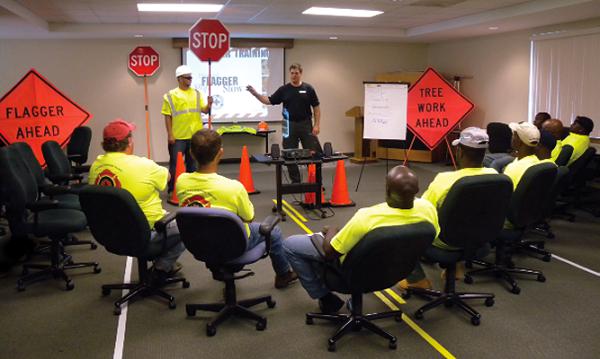
Where there are numerous work shifts, such meetings should be conducted repeatedly or be held at a place and time that will enable all affected employees to participate. Online safety training is a pragmatic and efficient way to deliver safety meetings and talks for numerous work shifts.
Workplace Safety Training ─ Benefits
Hazards are pervasive to every organization or all types of industries, hence it is essential for an organization to make provisions for safety training for their workers and to update the safety programs and norms on a regular basis.
There are many sources of online information about training and development. Several of these sites indicate reasons for managers to conduct training among employees. These reasons include −
Educate employees on the basics of health and safety
Increased focus by employees on their tasks
Increased job pleasure and confidence among employees
Increased employee inspiration
Increased effectiveness in processes, deriving in financial gain
Increased ability to adopt new skills and methods
Increased change in scheme and products
Increase employee turnover
Increase company image, e.g., conducting ethics training
Risk management, e.g., training about sexual harassment, diversity training.
Increased productivity and satisfaction among personnel by keeping the workplace safe
Workplace Safety - Stress Management
Stress seems to be an unavoidable reality in modern-day life, but one can find ways to deal with it. The awareness that you’re in control of your life is the very basis of stress management. Controlling stress requires becoming aware of your thoughts, feelings, behaviors and the influence of your day to day life on the way you deal with issues.
Stress is a general psychological and physical reaction to the ever-increasing demands of life. Experts suggest many way-outs to help us ensure a stress-free life, both at home and at workplaces.
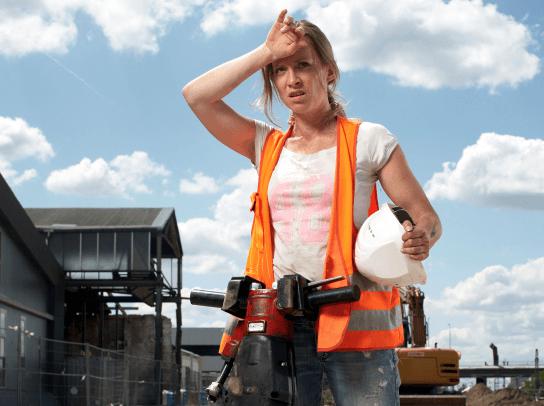
Unhealthy and unproductive strategies generally do little to minimize your stress. Such strategies frequently involve immoderate worrying or eluding of stress inducing situations.
Healthy and effective strategies basically involve some element of problem-solving to assist you better to manage your stress. It is a natural, human reaction to cope with stress in ways such as smoking, drinking too much, overeating or under eating.
Here is a list of the most common causes that lead to workplace stress −
Fear of being removed from the job
Excessive workloads with unrealistic deadlines
Insufficient workloads which make people feel that their skills are not used properly
Conspicuous absence of interpersonal communication and poor working relationship which leads to a sense of isolation among the employees
Inefficient and irresponsive management that overlooks or turn a deaf year to employees’ grievances and seldom meets their demands
Poor physical working environment
Failure to keep employees informed about significant changes to business
How to Limit Unnecessary Stress?
Some stress just can’t be passed over, and it’s never a good plan to avoid an issue which needs to be talked to. You may be surprised, however, by the number of stressors in your life that you can get rid of.
Learn how to say no − Both on a professional and personal ground. You should never take on more than you can manage as this will be a definite recipe for stress. Cut down your to-do list. Examine your schedule and plan out your tasks by level of importance.
Limit the amount of time you spend with people who stress you out − If someone normally causes stress in your life, limit the amount of time you spend with that person and be more conscious of your reaction to them. Your reaction is thankfully something you can handle.
Take control of the situation − Spot how you can limit stress in a specific situation. If driving to work stresses you out find a less busy route or cycle.
Don’t over-commit yourself − Take those and that much of work or tasks you can manage effectively well. Don’t make commitment beyond your limit and ability. Over-commitment leads you to a state of stressfulness.
Prioritize Tasks − Give due importance to time and effectiveness of each work assigned to you. Complete those task first which need your immediate attention.
How to Alter the Situation from Stress?
If you can’t restrict stress of a specific situation, try to alter it. Spell out what you can do to change things so the problem doesn’t present itself in the future.
Make your feelings known instead of covering them up − If something or someone is disturbing you, transmit your concerns in an open and respectful way. If you don’t voice your feelings, bitterness can build and the situation will probably remain the same.
Be Confident − Don’t take a second-string in your own life. Deal with problems head on, doing your best to foresee and protect them. If a client in work gives you an impractical deadline be honest and strong with them and say you will need more time in order to sufficiently complete the work.
Improve your time management skills − Poor time management can cause a lot of needless stress. When you’re running behind on tasks it’s tough to remain restful and focused. But if you plan ahead and make sure you don’t wear out yourself, you can alter the amount of stress you’re under.
How to Adapt to the Stressors?
If it’s not possible to alter the situation, try changing yourself. You can modify to stressful situations and recover your sense of control by changing your belief and attitude.
Re-evaluate problems − Try to view stressful situations from a more affirmative point of view. Rather than steaming up about a traffic jam, look at it as a chance to relax and enjoy some uninterrupted time.
Look at the bigger picture − Take view of the stressful situation. Ask yourself in the impressive scheme of things how important is this issue? Will you remember it in a week or months’ time? If the answer is no, then emphasis your energy on important things.
Adjust your expectations − Idealism is a major source of avoiding stress. Stop setting yourself up for failure by demanding perfection. Set reasonable standards for yourself and others, and learn to be okay with “good enough.”
Focus on the positive − When stress is getting you down, take a moment to impact on all the things you love in your life, including your own affirmative qualities and gifts. This simple scheme can help you keep things in view.

Accept Things Which You Can't Change
Some sources of stress are compulsory. You can’t avoid or change certain stressful events such as a death of a loved one or a serious illness. In these cases, the best coping mechanism is approval or acceptance of the situation.
Don’t try to manage the unmanageable − Many things in life are beyond our control specifically the behavior of other people. Rather than stressing out over them, emphasize on the things you can control such as the way you desire to react to problems.
Look for the positives − As the saying goes, “What doesn’t kill us makes us stronger.” When coping up with major challenges, try to look at them as chances for personal growth. If your own poor choices given to a stressful situation, reflect on them and learn from your mistakes.
Open up − Talk to a trusted friend face to face or make an appointment with an analyst. The simple act of communicating what you’re going through can be very healing, even if there’s nothing you can do to alter the stressful situation.
Make room for acceptance − Acceptance doesn’t mean you have to love it, like it, or want it but it is about making room for defect rather than always fighting against it. Let go off anger and indignation. Free yourself from negative energy by forgiving and moving on.
Make Time for Fun and Adopt a Healthy Lifestyle
Beyond taking a forceful approach coupled with an affirmative attitude, you can also minimize and enhance your power to stress by raising yourself and strengthening your physical health. Raising yourself is a necessity, not a luxury.
Set aside relaxation time − Include rest and relaxation in your day to day schedule and do something you enjoy every day such as playing an instrument, playing with your pet or getting absorbed in a good book.
Keep your sense of humor − This includes the ability to laugh at yourself. Be cheerful and smiling even in the face of any problem or difficulty. The act of laughing helps your body fight stress.
Exercise regularly − Physical activity plays a main role in minimizing and protecting the effects of stress. Make time for at least 30 minutes of exercise.
Consume a healthy diet − Healthy body is an abode of a healthy mind. Healthy and fitting bodies are better prepared to cope with stress; so be watchful of what you eat.
Get enough sleep − Try to have between 7 and 8 hours sleep per night which helps to keep fit both body and mind. Feeling tired will only enhance your stress levels as it may cause you to think illogically.
Workplace Safety - Violence
Workplace violence constitute those incidents where employees or workers are abused, threatened, humiliated or attacked, either by people from within or outside their workplace. It involves clients, employee, visitors and customer etc. This workplace violence ranges from verbal abuse and threats to physical assaults and even homicide.
Many people think of violence as a physical assault. However, workplace violence is a very big concern and much broader problem. It is an act where a person could be threatened, assaulted or intimidated, abused in his or her employment.
Workplace violence also includes −
- Threatening behavior
- Verbal or written threats
- Harassment
- Verbal abuse
- Physical attacks
What is Workplace Violence?
Workplace violence is violence or the warning of violence against employees. It can happen at or outside the workplace and can range from danger and verbal abuse to physical attacks and crime, one of the main causes of job-related deaths.

Workplace violence is a growing concern for employers and employees globally. It is complex and heterogeneous phenomenon. The perception about what constitutes violence varies in different contexts and cultures. Acts of violence may range from minor cases of disrespect to criminal offences: including, homicide, physical assault, threat, verbal insult, harassment (bullying, mobbing), sexual harassment and discrimination.
Workplace violence can be both internal and external. Internal workplace violence occurs among employees or workers of the organization, whereas, external violence is perpetrated by persons outside the organization.
How to Identify Workplace Violence?
Though workplace violence takes shape all of a sudden it has its foreground or breeding grounds. Every stakeholder of an organization should remain alert and mindful about the possible grounds that can erupt violence.
It is pertinent to know that both individual and organizational factors cause workplace violence.
Too much complaining or moaning − This can be the first symptom that a colleague has had a prompting event that might increase to anger and violence, especially if he is basically content at work.
Removal − A co-worker who entirely departs into his shell could be instructing that he is having trouble coping.
Deviation from usual behavior − If your colleague is usually reticent and egoist, and all of a sudden starts babbling and mixing around or if an extrovert departs and grows mum, that can be a symptom that something is wrong.
Compulsive thought patterns or discussions − If an employee starts jiving against “the machine” or talking continually about the injustice of the world, it could be a threatening sign.
Biased demands − When an employee becomes restless and wants an immediate response, like the marketing director who wants to meet the CEO immediately, such behavior could instruct that he is in a troubled state.
Personal insults − If an otherwise respectful colleague flies off the handle and attacks, that can mean his anger is building. If one employee gets insulted before his colleagues or top managers, he/she feels humiliated and can turn himself/herself into a potential source of violence in not-so-distant future.
Warning − It may seem apparent, but Staver says this is the most forceful sign that violence could happen. If your co-worker starts saying, individually, that he needs to hurt someone, that’s a red flag, he says, especially if the person has explicit plan, the resolution to carry it out, and the means to see it through.
How to Address Workplace Violence?
Preventing and managing workplace violence is an onerous task. The instruction is a practical, convenient tool that builds on the strategy approach of the Framework Guidelines. Representatives of governments, employers and employees would be well served to utilize the booklet in training conditions, so as to motivate social dialogue among health sector investors and develop, in consultation, approaches to address violence in the workplace.

This Training Manual is a counterpart to the Framework Guidelines. These two documents comprised of a package that should make possible distribution and useful utilization of the Framework Guidelines.
Functioning − Regularly, the crisis team should direct tabletop exercises to pretend incidents of workplace violence.
An emergency messaging system − Good ideas are important in any crisis. But relying on a phone tree isn’t a feasible communication scheme.
Implement a Workplace Harassment Policy
Every employer should have a written policy particularly preventing sexual harassment. The policy should be included in the employee handbook, distributed to all new employees, posted, redistributed on a daily basis, and discussed to employees often.
Make sure the policy includes the right provisions. The policy should include language that −
Utters sexual harassment will not be tolerated
Specifies and provides examples of sexual harassment and other forbidden conduct
Plans a process for employees to make complaints about sexual harassment, and motivates all employees to report incidents of distasteful sexual conduct
Gives several access for an employee to report sexual harassment so that the employee can avoid his or her manager, who might be the so-called harasser
Satisfies that all complaints will be managed as secretly as possible
Promises that employees who complain about sexual harassment will not suffer unfavorable job reactions as a result of the complaint
Expresses that any employee who engages in disagreeable sexual conduct is subject to discipline, up to and including discharge, and
Needs supervisors and managers to immediately report doubtful sexual conduct.
Managers and supervisors must become completely common with the employer's policy preventing sexual harassment. They should reread the policy on a daily basis and consult the policy when any sexual harassment issue arises.
Identify Company Hazards
Employees are the assets to any organization, hence every employee is important for the organization. Proper care and attention by the employer need to give to the upbringing of human capital. This will make the employee to be more dedicated, disciplined, committed and responsible towards his/her work which will in turn help in the growth and development of the organization.
Every employee should be happy and comfortable with the work what they do and the workplace where they work. The workplace plays an important role in shaping and motivating the employees; so it should be a safe and healthy place to work.
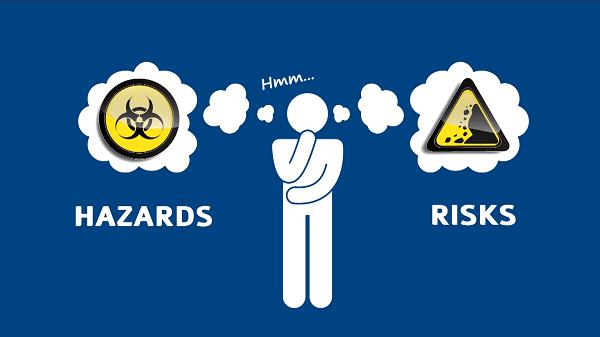
The workplace should be hazard-free and for making it a hazard-free place, the employer needs to identify the hazards, which helps in rectifying and resolving the problems and issues. Now, in this chapter we will discuss and put more light on identifying the hazards of the organization.
Conduct an Inspection
Preparing for the Inspection is the initial step. The success of workplace inspections depends on having the needful information. There should also be a general system of management controls which is pliable enough to allow for changes to be made, for example in equipment or work practices, when required.
To properly recognize hazards, the person or persons managing the inspection should have the mandatory training, which should include the plant arrangement – a floor plan is helpful in drawing up for the inspection, and recording findings. The possible hazards related with the various machinery, equipment, materials, and processes and the prevailing controls, applicable standards and regulations.
Prioritize Deficiencies
There is a need to examine the planned inspection route before undertaking the inspection. Review where inspection team members are going and what they are searching for. This removes the need for arm gestures, shouting and other disappointing procedures of communication during carrying out inspection.
For inspections, wear personal protective equipment (PPE) where needed. If you do not have PPE and cannot get any, do not undertake the area. List this as a deficiency during the inspection. Re-inspect the area when PPE is given.

Look for divergence from accepted work practices. Use statements such as, "an employee was noticed setting off a machine without a guard." Do not use information obtained from inspections for corrective measures.
Here is a list of some common poor work practices −
Using machinery or tools without power
Working at risky speeds or in other breach of safe work practice
Detaching guards or other safety devices, or giving them vain
Utilizing defective tools or equipment in dangerous ways
Utilizing hands or body instead of tools or push sticks
Adjusting equipment that is in action, under pressure, or electrically charged
Standing or working under suspended loads, scaffolds, shafts, or open hatches
Generating unsafe, unsanitary, or unhealthy conditions by improper personal hygiene, by using compressed air for cleaning clothes, by poor housekeeping, or by smoking in official areas
Overburdening, crowding, or failing to stabilize materials or handling materials in other unsafe ways, including improper lifting
While conducting inspections, follow these basic principles −
Draw attention to the presence of any instant danger in the immediate surroundings.
Shut down any hazardous items that cannot be brought to a safe working standard until mended.
Look up, down, around and inside. Be well organized and thorough. Do not spoil the inspection with a "once-over-lightly" approach.
Distinctly describe each hazard and its exact location in your rough notes.
Ask questions, but do not disturb work activities. This may interfere with efficient assessment of the job function and may also generate a possibly hazardous situation.
Discuss as a group, "Can any problem, hazard or accident created from this situation when looking at the equipment, the process or the environment?" Decide what corrections or controls are appropriate.
Do not try to notice all hazards simply by depending on your senses or by looking at them during the inspection.
Take a photograph if you are unable to clearly describe or sketch a specific situation.
Report and Following Up
To make a report, first copy all incomplete items from the previous report on the new report. Then write down the noticed unsafe condition and endorsed methods of control. Enter the department or area inspected, the date and the inspection team's names and titles on top of the page. Number each item successively, followed by a hazard classification of items according to the chosen plan. State precisely what has been perceived and accurately recognize its location.
Make the Management aware of the problems in a short, accurate way. The Management should be able to understand and assess the problems, allocate priorities and quickly turn to decisions. Take immediate action as required. When permanent correction takes time, take any temporary measures you can, such as roping off the area, tagging out equipment or posting warning signs.
After each listed hazard, state the recommended disciplinary action and establish a definite correction date. Each inspection team member should review for accuracy, clearness and thoroughness.
Review the information acquired from regular inspections to recognize where instant corrective action is needed. Identify trends and obtain timely feedback. Survey of inspection reports may show the following −
- Prime concern for corrective action
- Necessity for improving safe work practices
- Intuition about why accidents are happening in specific areas
- Necessity for training in certain areas?
The health and safety committee should review the progress of the recommendations, importantly when they affect to the education and training of employees. It is also the committee's responsibility to study the information from day-to-day inspections. This will help in recognizing trends for the preservation of an effective health and safety program.
Workplace Safety - Drug and Alcohol Abuse
Consumption of drug and alcohol among the employees can be an expensive and ruining problem for businesses and industries. Alcohol is the most widely abused substance in the world today. A majority of victims of alcohol are young and adult people.
Issues that escalate from such abuse of drug and alcohol are many, such as reduced productivity, absenteeism, injuries, and low employee morale.
Drugs and Alcohol problems are also called as the substance abuse or misuse, which is very harmful to self as well as to the others who could be family members, friends and colleagues working in your organization.
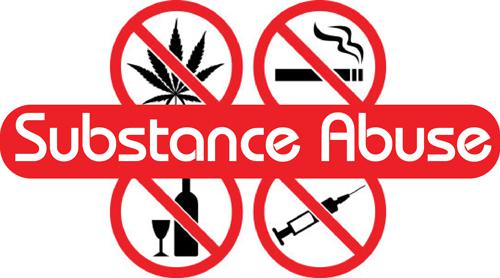
The drugs and alcohol changes the person’s behavior and his/her character as well. This change in behavior and character effects many people who are living in and around of the persons, who are addicted causing into many problems.
For Employees
Alcohol drug consumption among the employees prove destructive not only for the employee/s concerned but also for their families and the organization they work with. It leads a lot of problems like nearly perpetuated absenteeism, vague behavior, lack of skill and loss ability to take prompt decision while working.
The aforesaid issues that emerge from regular consumption of alcohol and drug by employees hamper overall productivity and disrepute the organization. Alcohol and drug kills the natural talent and ability among the employees.
Employees’ addiction with alcohol and drug costs the employer or the management exorbitantly. The exact cost of such burden is very difficult to calculate. Employers or the management are keenly aware of the issues arising from employees’ alcohol and drug abuse.
Additional problem areas can comprise of −
Delay/sleeping on the job
Aftermath of substance use (hangover, withdrawal) influencing job performance
Poor decision making
Loss of regulation
Low confidence of co-workers
Increased chances of having trouble with co-workers/managers or tasks
Illicit activities at work including selling illicit drugs to other employees
Improper behaviors at workplace
Pensiveness with acquired and using substances while at work, interfering with attention and concentration
A drug and alcohol addict is also a source of splitting headache for his/her family. Even addiction of other members of his/her family has a debilitating effect on the performance of the employee.
Two specific kinds of drinking behavior create work-performance problems −
And it isn’t just alcoholics who create problems in the workplace, research has shown that the majority of alcohol-related work-performance issues are connected with nondependent drinkers who may once a while drink too much and behave differently much to the detriment of smooth running of work.
There is always a level of danger when using any drug including prescription or over-thecounter medications. Drug responses vary from person to person. If you are taking a drug you haven’t had before, you won’t know how it will influence you. It’s significant to follow your doctor’s advice when taking prescription drugs and discuss any side-effects and how this might influence on your work.
The Way-out
The employers should make necessary provisions to check alcoholism and drug abuse among the employees.
Strict rules and code of conduct should be in place to disallow drunk employees to work
Interaction both on personal and group level with employees to know about their state of mind
Consultation facilities for individual employee by experts
Corrective measures to bring in change in the victims and refresh their minds with fresh and constructive ideas and outlooks
For Managers and Supervisors
An employee’s commitment to drink is that individual’s personal business; however, when the use or abuse of alcohol impede the employee’s ability to perform his or her duties, the employer does have lawful concerns, including the concerns for proper performance of duties, health and safety issues, and employee conduct at the workplace.
Supervisor’s Role
As a supervisor, you have a significant role in containing alcohol problems in the workplace, along with other agency officials. You have the day-to-day authority to monitor the work and on-the-job performance of your employees. You are responsible for identifying alcoholism in employees. Basic administrative responsibilities include −
Allocating, monitoring, Studying, and appraising work and performance
Fixing work schedules, accepting or disliking leave requests
Mentioning employees to your agency’s Employee Assistance Program (EAP)
Proceedings necessary remedial and disciplinary actions when performance or conduct problems surface
At any time, if an employee is found to have suffered from the problem of substance abuse, the manager needs to 7−
Gather resources and education materials for treatment of persons suffering from substance abuse
Look through legal recourses while dealing with such victims
Explore insurance coverage to meet financial concern for the treatment of the victims of substance abuse
On seeing an employee showing common signs of substance abuse, address the issue directly having a personal conversation with the employee in which you review the company’s policy, express your concerns and provide any resources you have gathered
For example, an employee may become drunk while on duty or be arrested for drunk driving. Your role is not to analyze the alcohol problem but to exercise responsibility in dealing with the performance or conduct problem, hold the employee answerable, refer the employee to the EAP, and take any perfect disciplinary action. Your role in dealing with alcoholism in the workplace is deciding.
The most useful way to get an alcoholic to deal with the problem is to make the alcoholic aware that his or her job is on the line and that he or she must get help and advance performance and conduct, or face serious reactions, including the possibility of losing his or her job.
Workplace Safety - Writing the Plan
Well-thought and complete planning is essential to insist safety and health in the organization. Safety plans are intended to improvise and optimize survivor or victim safety at every stage. And for having a safety plan, the safety plan should be prepared, discussed, reviewed and written with the professionals or experts of the safety department.
Elements of Safety Plan
The safety plan can also be written by having a basic working knowledge of safety and the work your company deals with. Every safety plan should be a dynamic document that can be easily adapted to the specific safety with regards to change of time and changes in the situation and prospectus.
Safety plan should be devised in accordance with the legislative requirements of the country.
It contains the roles and responsibilities of the staff concerned to ensure safety and health
It contains all matters of health, well-being and safety of those who are or belong to the organization
It serves and protects the individuals who matter for the organization
It delineates the areas of safety concerns, how to deal with the concerns and the requirements to deal with the concerns
It differs from industry to industry depending upon the nature of work, company policies and the external environment.
Safety plans should start from the assumption that an abuser is dangerous and try to help the victim/survivor. It seeks to identify the circumstances under which the abuser typically becomes violent and how the abuser may react to help seeking strategies.
Safety and health written programs can establish and provide procedures, guidelines and documentation for safety practices such as equipment inspection, training, evaluation of contractors and performance review through job observations.
Management Involvement
Management involvement in devising the safety plan and its proper execution adds importance to it. Observable senior management leadership within your organization encourages safety management as an organizational value.
Senior management should take these actions to show energetic leadership in the safety and health processes −
Edit a written safety policy as a central value of the organization and allocate roles and responsibilities
Organize both yearly and long-term safety objectives
Include safety as a scheme item in all day-to-day scheduled business meetings
Reviewing progress of the safety & health processes with supervisors & employees
Escort supervisors, safety team members or safety committee members during periodic departmental safety surveys
Analyze and discuss all accident-enquiry reports with the supervisor or foreman;
Present safety identification awards to worthy employees
Openly debate safety issues with employees during periodic tours or meetings
Take part as a student in employee safety training programs
Take part in meetings with accident-prevention coordinators
Responsibility should be expanded throughout the organizational structure to ensure that the policy objectives are integrated into all activities.
Employee Involvement
Employee involvement and identification sustain employee’s chances to take part in the safety-management process requirements. To ensure the success of the program, both management and employees will take part in the safety and health management process.
Employee participation chances can include −
Accident investigations
Safety and health inspection
Emergency response teams
Development of operating procedures
Presentation of training topics
Feedback about the working of safety plan
Safety and health involvement teams, focus groups, or safety and health committees
The team should meet every quarter with the planner. The planner should be a member of the team who plans the meeting, arranges for a meeting place and informs members of the meeting.

The agenda of the meeting should be to discuss the following points −
Edit and make accessible records of the safety and health issues, and results discussed during meetings
Use identification problem-solving techniques
Advocate particular actions in response to employee safety suggestions
Conduct surveys of the safety culture every 12 to 18 months
Analyze investigations of accidents and causes of incidents resulting in injury, illness or subjection to risky substances, and recommend specific action plans for prevention
Workplace Safety Training of Employees
Conduct direction and training for all employees Requirements recognize and respond to the particular training needs of your employees, including supervisors, managers and team leaders. Develop a written safety-and-health training plan that documents particular training aims and instruction procedures.
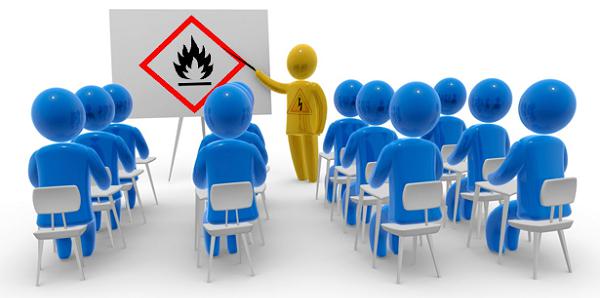
The safety-and-health training plan should include −
- Company safety and health policy statement
- Employee accountabilities
- Risky communication
- Specific job/task safe work practices and hazard identification;
- Reporting
- Process for the safe and efficient use of machinery and tools
- Ergonomic risk factors, including the prevention of increasing shock disorders
- Chemical hazards and how to prevent contact or exposure
- Risks associated with movement like lifts and elevators and provision to deal with
No matter how safe a work environment you have, the success of your safety-and-health systems depends upon the managers, supervisors, team leaders and employees sticking to or implementing safe work practices.
Workplace Safety - Plan Implementation
Once the safety planning is over, the next step is the need to develop way to implement workplace safety program as effectively as possible. Effective and favorable implementation of safety plan depends upon the close rapport between the managers and the employees.
Managers and employees need to work together to favorably apply a safety plan. In order for this to happen, the roles and accountabilities must be clear. Employee representatives and committees have a clear role that will assist to execute the safety plan, and assess the plan for essential changes to make it highly useful for the organization safety and health.
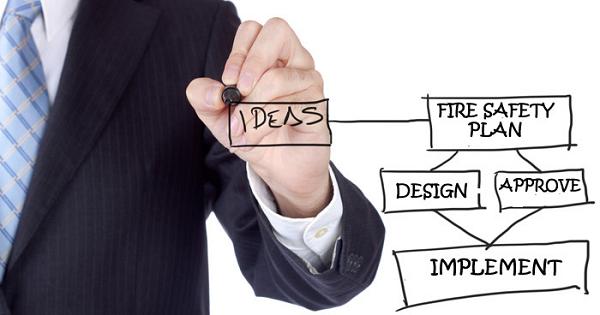
Implementation of Workplace Safety Plan
Implementation of workplace safety plan involves a host of things like educating employees and managers, and making every stakeholder of the company feel responsible for ensuring that all the safety norms and policies are being rightly followed.
Select a health and safety manager
There should be special position for a health and safety managers in the company to look after, especially the proper implementation of safety policies. This person should have required qualification, experience and ability to enforce health and safety policies. He/she can be someone already working in the company or a new pick.
Educate every stakeholder about the safety program
There is a need to explain the managers and the employees regarding the compulsory following of safety policies. There should also be provisions for penalties in case of non-compliance of the policies. The management must be bought into implementing the workplace safety programs. It will motivate the employees to abide by the policies.
Periodical Training for all concerned
Periodical like monthly training with the employees is necessary for effective implementation of the safety policies. The employees could be refreshed about the proper ways to work safely and the consequences of not working safely. A critical aspect of training involves ‘new employee orientation’.
Written workplace safety program for the employees
Each employee should be provided with a written copy of workplace safety program and any updates to the program if there is any change.
Select an employee representative
Employee representatives may also be a Union health and safety representative, if your company works with unions. They may escort the company inspectors. Employers do not select employee representatives. The safety committee or other employees selects the representative.
Identify roles
Safety plans needs employees to take on different roles. Safety committees are not utilized in all organizations, but they can be involved and active in executing safety plans. They assist to teach both the employers and employees about safety. Safety committees are significant to growing a safe culture, and they carry out other functions.
Assign Responsibility
The common responsibilities of employers and employees have been directed in the safety plan, but problems need individuals to take accountability. For example, an inspection that develops in a report that needs action should define who the trustworthy party is.
Managers and committee members have a great deal of responsibility, and everyday works, such as training, may be allocated to trusted employees who are capable of managing the task.
Follow through with the plan
Having a plan in place is not sufficient. You need to follow through with the plan. Analyze your health and safety plan on daily basis to make sure that the essential changes have been made, and they are implemented successfully. An action plan will help you follow through with your new safety plan.
After execution of the workplace safety plan, problems come to the surface. The management accordingly reshapes and updates the existing safety plan. Training is arranged to bring home the changes for the employees. The safety managers continue to maintain and change the plan to stay up-to-date with current regulations and thus, become able to establish a safe and healthy work environment for everyone in the organization.
To conclude, workplace safety is cardinal to the survival and running of an organization. No organization, whether small or large, can overlook the vital factors related to safety management. The present Tutorials ‘Safety in Workplace’ is best designed to concisely describe the tidbits of the topic in an intelligible format.


























